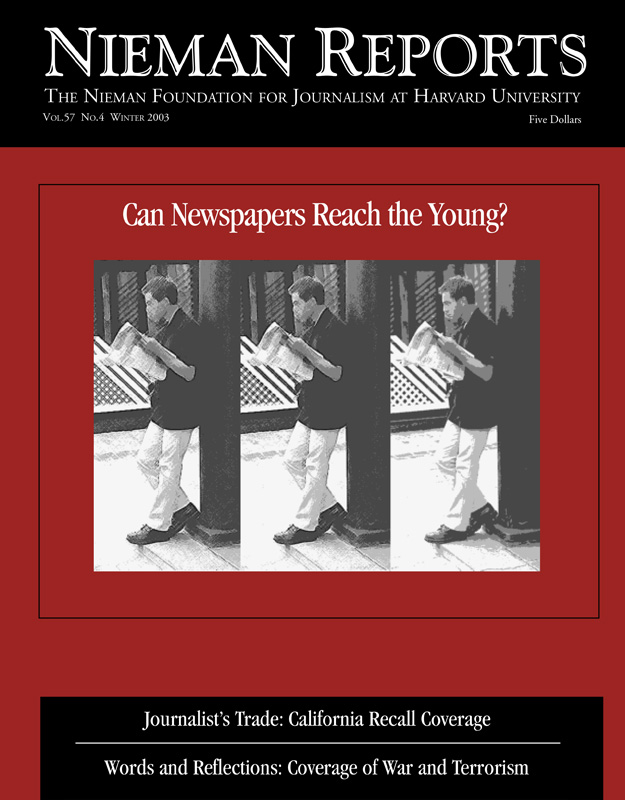Prior to accepting the position of managing editor at Editor & Publisher, I worked as a substitute teacher in Collingswood, New Jersey and in my hometown of Staten Island, New York. Working in the classrooms made me realize how much kids still believe in newspapers—and that now, more than ever, it is crucial for reporters and editors to make their presence felt in the classroom and not just through Newspapers in Education (NIE) programs.
I’m no expert on the world of education, but once I stepped into the public school system, albeit briefly, I quickly discovered that a great many students are learning much less than we think they are. It was shocking.
Many of my days were largely spent trying to discipline students who were pleased to see someone other than their usual teacher at the front of the room—and equally eager to make my life miserable. But no matter how badly behaved or disaffected the students seemed, every time I mentioned that I had spent years as a writer and editor at the Staten Island Advance—the popular local paper of the “forgotten borough”—the chaos subsided, and I had the students’ attention, if only for a few minutes.
It was as though I had suddenly become cool, that because I was associated with “the paper,” they grew interested. The things I had to say carried a new weight. It was then that I realized how important, and powerful, newspapers are to kids. I had thought they had little regard for newspapers and anything that we had to say, particularly in this Internet and video game age. Attention spans are shorter than ever, making it increasingly hard for teachers—and print journalists—to reach youngsters.
It’s not much of a stretch to believe that teens will always think of newspapers—despite current efforts to court younger readers—as little more than a forum in which grown-ups regularly provide disinformation to each other and to young people, especially in light of the Jayson Blair scandal and other well-known episodes of journalistic wrongdoing.
But after the umpteenth episode of getting a wide-eyed look from kids when I told them I’d written for the Advance, I found out just how wrong that assumption might be. What became clear to me is that newspapers have both a responsibility and an opportunity. We have a responsibility to improve education and awareness of current events by remaining dedicated to NIE programs. But we also have an opportunity to reach young people by showing them (at an impressionable age) not just what newspapers produce, but how they work.
In articles urging the press to reform newsroom policies and our public image in the wake of the Blair scandal, many former editors and media critics have advised newspapers to offer readers a clear view of how they operate—to become “transparent,” as the saying goes. In an Editor & Publisher article, for example, [former Nieman Curator] Bill Kovach advised that there was “only one way to fix” our current credibility problem: “Be open, be transparent and explain all of the time what we do. We are in a world of interaction right now. I don’t know why news organizations don’t set up more mechanisms for the public to come into the organization.”
Obviously, kids are not going to come to the newspapers—so newspapers must go to the kids. If we do, the payoff could be big. Contrary to our self-image, journalists are often viewed by kids as just one step removed from the pop-culture media they really love: rock and hip-hop music, movies and television. After all, we write about all those things, sometimes even meet a star or two, and that rubs off on us, positively.
Scheduling visits to schools would not be easily accomplished at a time when resources are stretched thin at papers across the country. Some can barely afford to send a bunch of reporters out into the field, while holding others back to answer those nagging newsroom phones. It’s far too easy for us to get caught up in the next deadline than it is to give this “transparency” idea some honest consideration.
But the potential benefits of personally interacting with younger readers— of responding to their questions, helping them understand what journalists do—are real. If young people grow up believing they can’t trust reporters and editors to tell the truth and respect their audience, will they turn to these newspapers when they are older? Taking time to reach out to young people and showing them, in person, that we’re not all a bunch of grinning liars is an investment in our future as a medium.
Who knows? Given the opportunity, we and the kids just might learn something, too.
Shawn Moynihan, managing editor of Editor & Publisher, worked at the Staten Island Advance from 1989 to 2001. A version of this article first appeared in Editor & Publisher on June 16, 2003.



